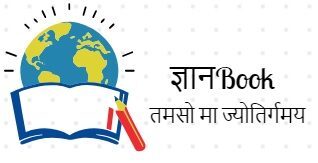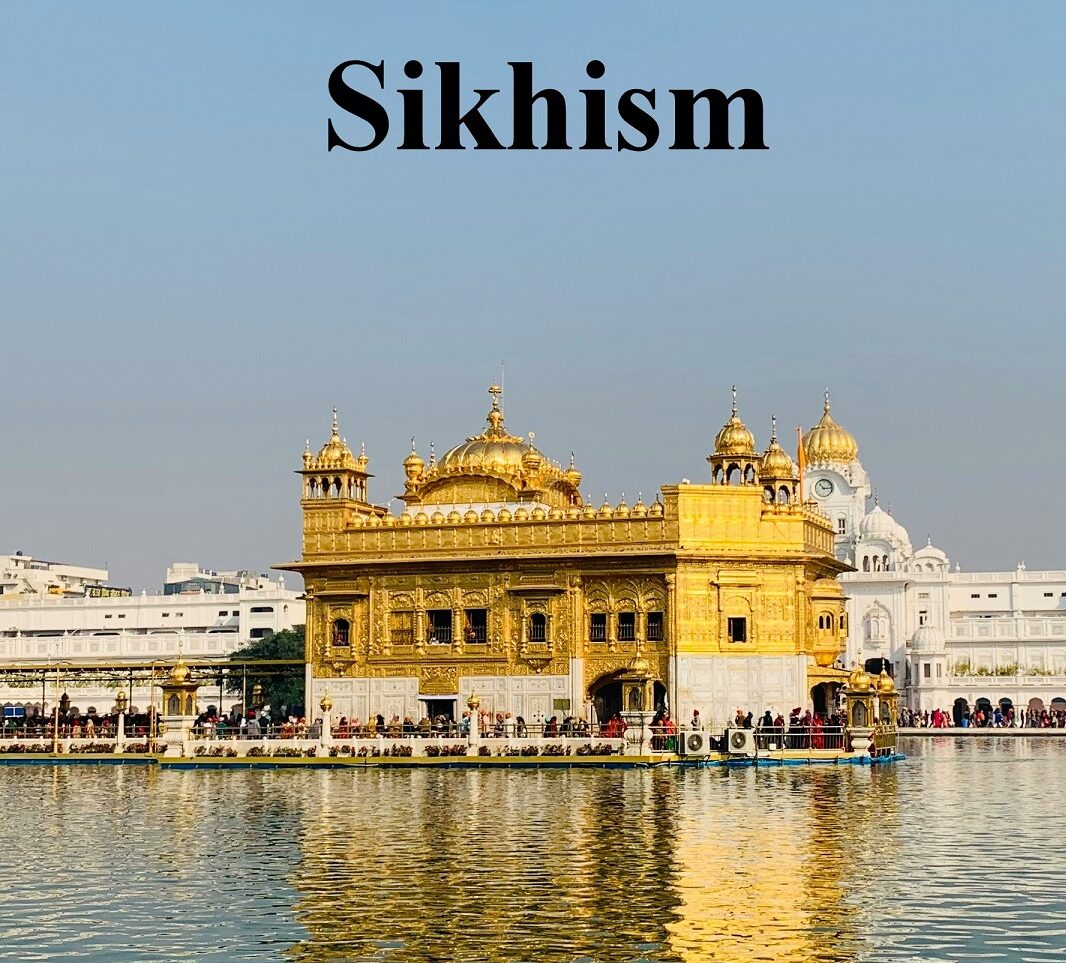The word ‘Sikh’ goes back to Sanskrit word ‘Sisya’ means a learner or disciple. The first date in Sikhism is 1469 AD. This was the year in which the founder of the faith, Guru Nanak Dev ji was born.
The Ten Gurus – Sikh History
Guru Nanak Dev Ji: 1469-1539
- Birth – 1469 at Rai Bhoi ki Talwandi (now called Nankana Sahib)
- Father/Mother–Mehta Kalu Ji/Mata Tripta Ji
- Spouse- Bibi Sulakhni
- Sons – Baba Sri Chand and Baba Lakhmi Chand
- City Founded– Kartarpur (Lahore, Pakistan)
- Introduced – Langar Pratha
- Compilation–Japji Sahib, Sidh Gosht, Asa di war, Barah mah, Onkar, 947 Hymns, Malar & Madge
- Mughal Emperor at his time- Babur (First Mughal Emperor) and Sher Shah Suri
- Successor- Lehna (Guru Angad Dev ji)
- Jyoti Jot– 1539 at Kartarpur
Guru Angad Dev Ji: 1504-1552
- Birth – 1504 at Matte di Sarai (Sarai Naga) in Muktsar District
- Orignal Name–Bhai Lehna
- Father/Mother– Bhai Pheru Mal Ji/ Mata Daya Kaur
- Spouse – Bibi Khivi
- Children– Sons: Dassu Ji, DattuJi; Daughter: Bibi Amro Ji and Alakhni Ji
- City Founded–Khadur Sahib (situated in Tarn Taran District)
- Compilation– Bhai Bale Wali Janam Sakhi (Biography of Guru Nanak Dev Ji)
- Invented – Gurmukhi Script
- Practice Incorporated – Mal Akhara
- Mughal Emperor at his time – Humayun and Sher Shah Suri
- Successor – Guru Amar Das ji
- Jyoti Jyot – 1552 at Khadur Sahib
Guru Amar Das Ji: 1479-1574
- Birth – 1479 at Basarke (Amritsar District)
- Father/ Mother – Tej Bhan Ji/ Mata Bakht Kaur
- Spouse – Mansa Devi
- Children – Sons: Mohri and Mohan; Daughter: Dani and Bhani
- Started- Manji System
- Composed – Anand Sahib
- City Founded– Goindwal Sahib (now situated in Tarn Taran District)
- Constructed – Baoli Sahib at Goindwal Sahib
- Introduced – Pangat te Sangat
- Mughal Emperor at his time – Akbar
- Successor – Bhai Jetha ji (Guru Ram Das ji)
- Jyoti Jyot – 1574 at Goindwal Sahib
Guru Ram Das Ji: 1534-1581
- Birth – 1534 at Chuna Mandi (Lahore, Pakistan)
- Father/ Mother – hari Das ji/ Mata Daya Kaur
- Spouse – Bibi Bhani (Daughter of Guru Amar das Ji)
- Children – Sons: Prithi Chand, Mahadev and Arjan Dev
- Started – Masand System
- Compositions – 638 hymns in 30 different ragas, Lavan (Marriage Hymns), Ghorian
- City Founded – Amritsar (Ramdaspur) (Also known as Guru ka Chak)
- Most Distinguished of his Missionaries – Bhai Gurdas ji
- Mughal Emperor at his time – Akbar
- Successor – Guru Arjan Dev ji
- Jyoti Jyot – 1581 at Goindwal Sahib
Guru Arjan Dev Ji: 1563-1606
- Birth – 1563 at Goindwal Sahib
- Father/Mother – Guru Ram Das ji / Bibi Bhani Ji
- Spouse – Mata Ganga
- Children– Har Gobind Ji (son)
- Completed the construction of – Amritsar Tank, Santokhsar and Ramsar Sarovars
- Constructed – Harimandi Sahib
- Invited – Sufi Mian Mir to lay the foundation of Harimandir Sahib
- Compilation– Sukhmani Sahib, Adhi Granth (Pothi Sahib) in 1604, Barahmaha, Bavan Akhri
- City Founded – Taran taran in 1590, Kartarpur (Jalandhar) in 1594
- Rebuilt – Ruhela Village and renamed it as Sri Hargobindpur
- Introduced – Daswandh System (System of donating one-tenth income)
- Mughal Emperor at his time – Akbar, Jahangir
- Successor – Guru Har Gobind ji
- Jyoti Jyoti – 1606 in Lahore
- First Sikh Guru to be martyred on order of Jahangir
Guru Har Gobind ji: 1595-1644
- Birth – 1595 at Wadali Village near Amritsar
- Father/ Mother – Guru Arjan Dev ji/ Mata Ganga
- Spouse – Mata Damodari, Mata Marvahi and Mata Nanaki
- Children – Sons: Gurditta, Ani Rai, Suraj Mal, Atal Rai and Tegh Bahadur; Daughter –Bibi Viro
- Introduced – Miri (Temporal Power) and Piri (Spiritual Power)
- Known as – Bandichhor
- Constructed – Akal Takht (in front of Harimandir Sahib, Amritsar) and Lohgarh Fort at Amritsar
- City Founded – Kiratpur Sahib (Ropar)
- Mughal Emperor at his time – Jahangir and Shah Jahan
- Successor – Guru Har Rai ji
- Jyoti Jyot – 1644 at Kiratpur
Guru Har Rai ji: 1630-1661 (Grandson of Guru Hargobind)
- Birth – 1630 at Kiratpur Sahib
- Father/ Mother – Baba Gurditta/ Mata Ananti
- Spouse – Sulakhni
- Children – Sons: Ram Rai and Har Krishan
- Founded–Ayurvedic medicine center (KiratpurSahib)
- Blessed – a child named Phul (founder of Patiala, Nabha and Jind)
- Blessed and cured – Dara Shikhoh (eldest son of Shah Jahan)
- Mughal Emperor at his time – Shah Jahan and Aurangzeb
- Successor – Guru Har Krishan ji
- Jyoti Jyot – 1661 at Kiratpur Sahib
Guru Har Krishan ji: 1656-1664 [Youngest Guru (5 years old)]
- Birth – 1656 at Kiratpur Sahib
- Father/ Mother – Guru Har Rai ji/Mata Sulakhni
- Known as – Child Prophet (Bala Pir)
- Stayed in Delhi at – The house of Mirza Jai Singh of Amber at Raisina (now Gurudwara Bangla Sahib)
- Mughal Emperor at his time – Aurangzeb
- His Successor – Guru Tegh Bahadur ji
- Jyoti Jyot – 1664 at Delhi
Guru Tegh Bahadur Ji: 1621-1675
- Birth – 1621 at Amritsar
- Father/Mother – Guru Har Gobind ji/ Mata Nanaki
- Spouse – Gujari
- Children – Son: Gobind Das (Guru Gobind Singh ji)
- Founded – Chakk Nanki (Anandpur Sahib)
- Known as – Hind di Chadar
- Beheaded –
- On the orders of Emperor Aurangzeb
- By the axe of Jalal-ud-Din of Samana
- at Chandni Chowk, Delhi
- At the site of the Guru’s Execution – Gurudwara Sis Ganj was built by Sardar Baghel Singh
- Dismembered body was cremated-
- By Lakhi Shah Lubana
- At his cottage (now known as Gurdwara Rikab Ganj)
- Severed head was lifted – by Bhai Jaita, who carried it to Anandpur Sahib
- His Severed head was cremated –
- By Guru Gobind Singh ji
- At Gurdwara Sis Ganj, Anandpur Sahib
- Successor – Guru Gobind Singh ji
- Jyoti Jyot – 1675 at Chandni Chowk, Delhi
Guru Gobind Singh Ji: 1666-1708
- Birth – 1666 at Patna
- Father/ Mother – Guru Tegh Bahadur ji/ Mata Gujari
- Spouses – Jito ji, Sundari and Sahib Devan
- Sons – Sahibzada Zorawar Singh, Sahibzada Jujhar Singh, Sahibzada Fateh Singh and Sahibzada Ajit Singh
- Founded – Paonta Sahib
- Compositions – Dasam Granth, Var Sri Bhagauti Ji Ki, Bachitra Natak, Akal Ustat, Chandi di Var Jaap Sahib, Chadi Charitra, Chandi di Var, Gyan Prabodh, Chaubis Avtar, Khalse-di-Mahima, Swayyal, Zafarnama (a letter to Aurangzeb)
- Abolished – Masand System
- Converted to Sikhism – Madho Das Bairagi
- Mughal Emperor at his time – Aurangzeb and Bahadur Shah
- Successor – Guru Granth Sahib ji
- Jyoti Jyot – 1708 at Nanded, Maharashtra
- Established Khalsa Panth in 1699 at Anandpur Sahib
Battles of Guru Gobind Singh Ji
Battles of the Pre-Khalsa Period (1675-1699):
- Battle of Bhangani (1688)
- Fought between Guru Gobind Singh Ji vs Raja Bhim Chand andother Hill Chiefs
- Victory– Guru Ji
- Result – Bhimchand and other Rajput become friends of Guru Ji
2. Battle of Nadaun (1690)
- Fought between Guru Ji and Hill Rajas Vs Alif Khan (Mughals)
- Victory – Guru Ji
- Result – Alif Khan was defeated
Battles of the Post-Khalsa Period (1699-1708):
- First Battle of Anandpur (1701)
- Fought between Guru ji & his Sikhs Vs Raja Bhim Chand & other Hill Chiefs
- Victory – Guruji & his Sikhs
- Result – Rajas made compromise and the Guru retired to Nirmoh
2. Battle of Nirmoh (1702)
- Fought between Guru Ji Vs Raja Bhimchand & Mughal Forces
- Victory – Guru Ji
- Result – Defeat of invaders
3. Battle of Basoli (1702)
- Fought between Guru Ji Vs Raja Bhim chand
- Victory – Guru Ji
- Result–Sikh attacked territory of Raja and captured Kalmot
4. 2nd Battle of Anandpur (1704)
- Fought between Guru Ji Vs Hill Chiefs & Mughal Forces under Wazir Khan
- Victory – Hill Chiefs and Mughal Forces under Wazir Khan
- Result – Guru ji and his Sikhs had to leave fort and Zorawar & Fateh Singh were bricked alive
5. Battle of Chamkaur (1704)
- Fought between Guru Ji Vs Mughal Force
- Victory – Mughal Forces
- Result – 35 sikhs including two sons Ajit &Jhujar Singh died fighting heroically
6. Battle of Khidrana (1705)
- Fought between Guru Ji Vs Mughal Forces
- Victory – Guru ji and his Sikhs
- Result – Sikhs defeated theMughals but 40 of them (Chali Mukte) dies fighting
Guru Granth Sahib Ji
- Compiled by Guru Arjan Dev ji in 1604 and Bhai Gurdas ji acted as scribe with him.
- The Granth Sahib is written in Gurmukhi script.
- It as installed in the newly built Harimandir Sahib on 16 Aug 1604 and Baba Buddha ji was made its first Granthi.
Five Takhts
- Shri Akal Takht Sahib – Amritsar, Punjab (Oldest Takht)
- Shri Damdama Sahib (also known as Guru ki kashi) – Talwandi Sabo, Bathinda, Punjab
- Shri Keshgarh Sahib – Anandpur Sahib, Punjab
- Shri Patna Sahib – Patna Sahib, Bihar
- Shri Hazur Sahib – Nanded Sahib, Maharashtra
Note–Takht Shri Hazur Sahib and Takht Shri Patna Sahib constructed by Maharaja Ranjit Singh
Panj Pyare
- Daya Ram – Khatri from Lahore
- Dharam Das – Jat of Delhi
- Mohkam Chand – calico printer of Dwarka, Gujarat
- Sahib Chand – a barber from Bidar, Karnataka
- Himmat Rai – a water carrier from Jagan Nath, Orissa
The Five K’s
- Kesh – The Khalsas were to wear their hari and beard unshorn.
- Kanga – The Khalsas were to carry a comb in the hair to keep it tidy.
- Karra – The Khalsas were to carry a bracelet (karra).
- Kachha – The Khalsas were to wear a knee- lenght pair of breeches.
- Kirpan – The Khalsas were to be ever armed with a sword.
Baba Banda Singh Bahadur – The Sikh Warrior (1670-1716)
- Born on 27 December, 1670 at Rajauri in the Punchh district of Kashmir
- Original Name– Lachhman Dev
- Popular Name– MadhoSingh
- Another Name– Banda Bairagi
- Guru Gobind Singh Gave Name – Banda Singh Bahadur
- Battle of Chhapar Chiri – Fought between Banda Bahadur Singh Ji Vs Wazir Khan and in the battle Wazir Khan, the Governor of Sirhind was killed.
- Execution by– FarrukhSiyar on 9 June 1716
*Banda Singh developed the village of Mukhlisgarh, and made it his capital, then renamed the city it to Lohgarh
Sikh Misls
The word Misl is the Punjabi version of Confederation. Sikhs operated mostly under twelve Misls.

Maharaja Ranjit Singh
- Birth – 1780 at Gujranwala City (Pakistan)
- Father/ Mother – Sardar Maha Singh/ Sardarni Raj Kaur
- Popularly Known as – Sher-i-Punjab
- Misl – Sukherchakia
- Spouse – Mehtab Kaur
- Mainly raised by – Sada Kaur (his mother-in-law)
- Capital – Lahore
- Issued – Nankshahi Coins
- Two European Officers employed by him – Venture and Allard
- Built – Takht Sri Patna Sahib and Takht Sri Hazur Sahib
- Donated Gold Plates – To cover the walls of Harimandir Sahib
- Treaty with British – Treaty of Amritsar, 1809 and Tripartite Treaty of 1838
- Ranjit Singh proclaimed himself as Maharaja of the Punjab on the first Baisakh, 12 April 1801
- Death – 27 June 1839 at Lahore
Photo by Abhinav Sharma on Unsplash



